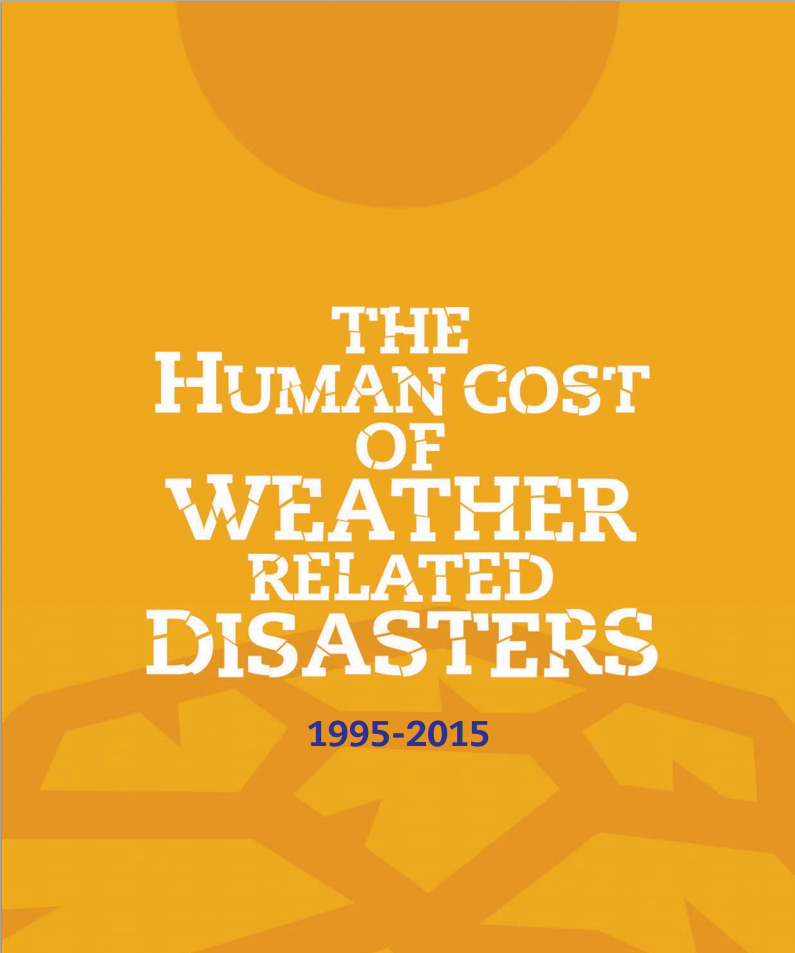The Human Cost of Weather Related Disasters (1995-2015)

A new report published by The United Nations Office for Disaster Risk Reduction (UNISDR), “The Human Cost of Weather Related Disasters”, shows that over the last twenty years, 90% of major disasters have been caused by 6,457 recorded floods, storms, heatwaves, droughts and other weather-related events.
Highlights
-The five countries hit by the highest number of disasters are the United States (472), China (441), India (288), Philippines (274), and Indonesia, (163).
-The report and analysis compiled with the Belgian-based Centre for Research on the Epidemiology of Disasters (CRED) demonstrates that since COP1 in Berlin in 1995, 606,000 lives have been lost and 4.1 billion people have been injured, left homeless or in need of emergency assistance as a result of weather-related disasters.
-The report also highlights data gaps, noting that economic losses from weather-related disasters are much higher than the recorded figure of US$1.891 trillion, which accounts for 71% of all losses attributed to natural hazards over the twenty-year period.
-Only 35% of records include information about economic losses. We estimate that the true figure on disaster losses – including earthquakes and tsunamis – is between US$250 billion and US$300 billion annually.
The Human Cost of Weather Related Disasters (1995-2015)
http://www.unisdr.org/2015/docs/climatechange/COP21_WeatherDisastersReport_2015_FINAL.pdf
